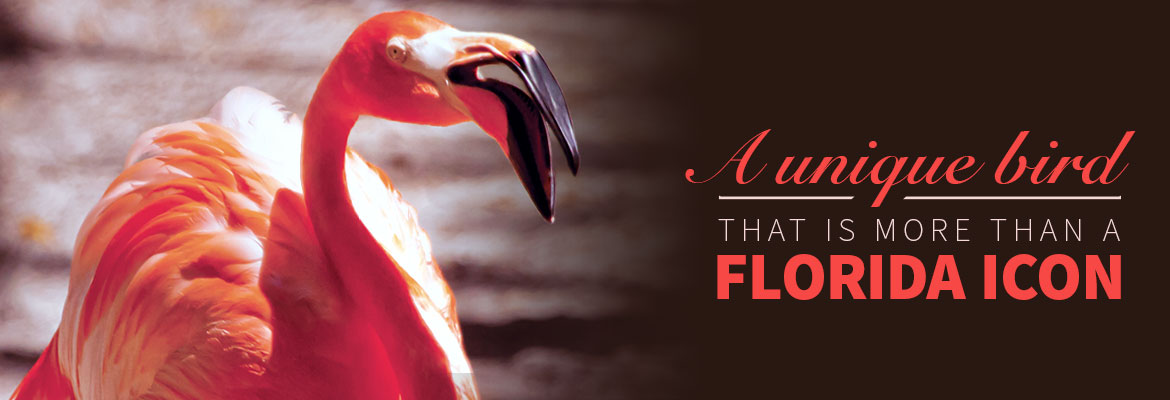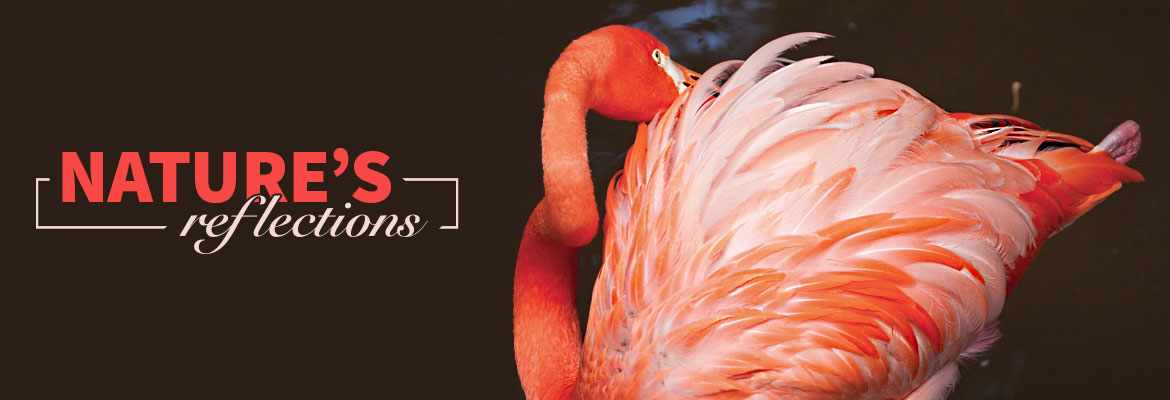Nature’s Reflections – Florida’s Flamingos
A unique bird that is more than a Florida icon, The American Flamingo, (Phoenicopterus ruber), is one of several flamingo species found through-out the world. It stands about four feet tall, has a down-curved hooked bill, very long legs, and pink webbed feet with three toes. Black tips on the wings are visible mostly in flight and the wingspan is about five feet.
Wild flamingos are found in South Florida, the Everglades, the Florida Keys and throughout the Caribbean. Normally, they do not migrate unless food becomes scarce. Only then, they will take flight on a clear night to find a new location.

Following hurricanes in Florida, some flamingos have been spotted as far west as Mississippi, although most of those are believed to be escapees from Florida’s parks and zoos. Somehow, they eventually find their way back home.
Flamingos feed in shallow coastal saltwater lagoons and mudflats by stirring up the mud with their feet. Then, they turn their head upside down to scoop up the water, straining it through bristles inside the curved beak and tongue. Blue-green algae is their primary food source and the reason for their pink color. In addition, small shrimp, seeds, mollusks, and microscopic organisms are also picked up in the process.
Flamingos in the wild are usually more brightly colored that those in captivity and may live up to twenty years. Males and females look alike; males are larger. They mate for life.
Courting includes a variety of flamboyant behaviors, head movements, wing displays and vocalizations. One egg is laid on a mound of mud. Both parents take turns incubating the egg for a month. Prior to hatching, the chick calls to its parents from inside the egg and from that moment, the parents forever know their chick’s call. The downy-gray chick hatches with a straight bill which makes feeding it easier. Both adults feed the chick until it fledges after seventy days. Chicks reach adult size at two years, but may not get their full adult plumage until three or four years of age.

Read the full February 2016 SECO News here.
Column & photo by: Sandi Staton






